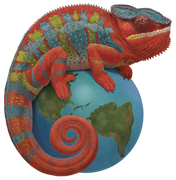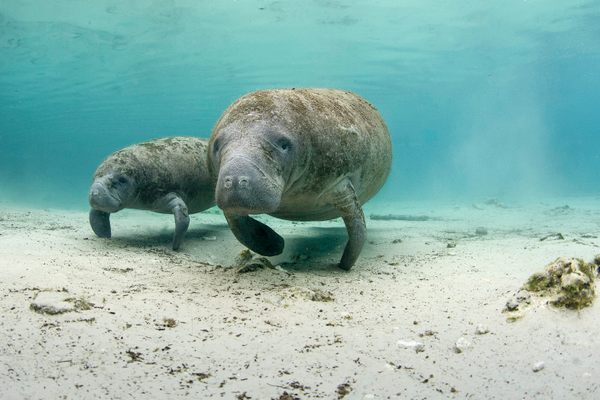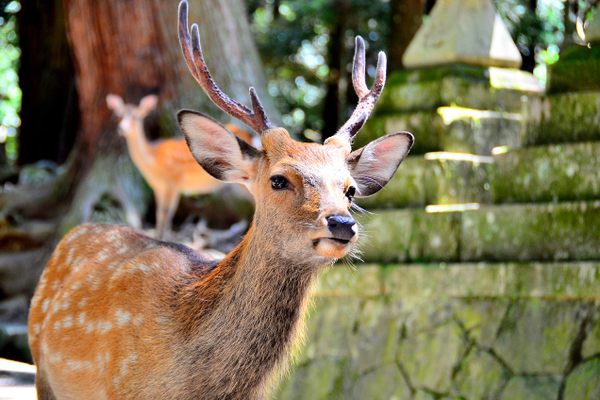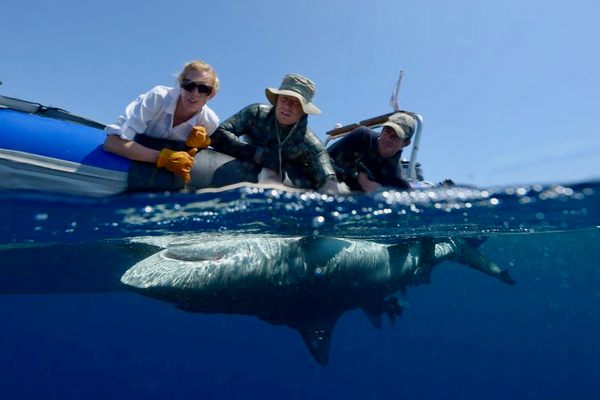Desert Tortoises Get New Homes in Backyards and Other Surprising Spaces
As their habitat dwindles, reptile relocators are springing into action to save these slow-moving icons.
Each week, Atlas Obscura is providing a new short excerpt from our upcoming book, Wild Life: An Explorer’s Guide to the World’s Living Wonders (September 17, 2024).
Desert tortoises know how to weather change. Residents of the Mojave for more than three million years, they’ve stuck around even as their ecosystem went from a dripping jungle during the Miocene to today’s sunbaked desert. In recent years, the landscape has begun to shift again as new wind, solar, and housing development projects fence tortoises out of their habitat.
And so, with the help of concerned local citizens, some tortoises have taken up a new survival strategy: They live in people’s backyards. Since 1998, the California Turtle and Tortoise Club has been rehoming reptiles who find themselves displaced by energy companies or housing developers. Many tortoises removed from project sites are adopted by human families. (Other rehoming candidates come from households who took them from the wild as pets decades ago, before it was illegal, but can no longer care for them.) Desert tortoises are the only species on the United States “threatened” or “endangered” lists that can be kept in this way.
The slow-paced lifestyle of these tortoises translates well to many California desert homes. Tortoise caretakers feed their charges grasses, but the reptiles are also known to nibble on garden flowers. They dig backyard burrows—private, underground spaces where some spend up to 95 percent of their time. In the wild, tortoises use burrows to hibernate during both the cold winters and the hot summers. In captivity, tortoises tend to hibernate less, but in more unusual locations; keepers often find their missing tortoises under dressers or in closets.


The tortoises are (relatively) high-maintenance in one respect: Unlike other desert creatures that can stay hydrated just by eating desert plants, they need to imbibe fresh water at least once every couple of years. A puddle on concrete, such as what you might find after a light rain, is typically enough to satisfy their thirst.
Desert tortoises help humans out, too. Companies proposing extractive projects in the desert often act as though no one lives there, ignoring not only wildlife, like the tortoise, but a number of Indigenous American groups with desert homelands. In the 1990s, a company proposed putting a nuclear waste dump in San Bernardino County’s Ward Valley, part of the territory of the Chemehuevi tribe and Mojave nation—and critical desert tortoise habitat. Images of radioactive, melting tortoises adorned posters protesting the project, and in the end, the tortoise’s threatened status helped stop it.
- Range: Alluvial fans and sandy flats in California, Nevada, and Utah
- Species: Desert tortoise (Gopherus agassizii)
- How to see them: In the wild, wait for an overcast day when rainfall seems imminent, or try springtime when the tortoises tend to be out chomping on plants. One well-known captive tortoise, Mojave Maxine, can be found at the Living Desert Zoo and Gardens in Palm Desert, California.

THE WILD LIFE OF: A Tortoise Adoption Coordinator
Mary Dutro has been the adoption chairman for the High Desert chapter of the California Turtle and Tortoise Club for more than 20 years. During her tenure, she has placed more than a thousand tortoises in new homes.
How did you first become involved with the California Turtle and Tortoise Club?
When Charlene and Sherman walked into my backyard in 1960. They were two tortoises, a male and a female. They stayed in my backyard until they became an endangered species [in 1989]. Then Fish and Wildlife had us release them to help rebuild the wild population. So Charlene, Sherman, and their kids were released out where a high school has now been built.
In your role as adoption coordinator, how do you place tortoises in homes? What does someone need to do to keep a tortoise at their home?
You have to consider the habitat—if it will be good for them. You’ve got to make sure that they have sun, shade, and a shallow water dish. They need dirt they can dig in. Sometimes they use doghouses to supplement their burrows.

Where do the tortoises that you get and rehome come from?
The majority come from households that can no longer care for them. Either a caregiver has died or they’re moving out of state, and they can’t take [the tortoises] out of state. Some of the tortoises have been in the same home for 40 or 50 years.
The other ones I’ve had turned in to me were living where [companies] were putting in solar fields. The ground under a solar field gets so hot that the tortoises can’t stay there. So the electric company, or whoever’s putting in the solar field, will rescue them and turn them in.
What are some of your other duties as adoption chair?
I did get a call from one gentleman who was trying to figure out why and how his tortoise died. We went through all the things as I’m trying to diagnose her on the telephone.
Finally, I thought to ask, “How old is she?” He said, “I don’t know exactly, but we’ve had her for over 140 years.” His grandfather found her out in the desert when she was the size of his hand.
So we figured that she was probably five or 10 years old when his grandfather found her—which, by the way, is against the law now; you can’t pick up a wild tortoise. We figured she died of old age.
What do you wish people knew about tortoises?
They are great pets. They don’t bark; they don’t bite! Desert tortoises don’t bother anybody. They do become associated with their families; they’ll recognize you when you come out. The tortoises will even knock on the patio door if you’re late putting food out for them.
They make nice pets as long as you treat them right and keep them safe. And they’ve been around here longer than the dinosaurs. They’re still here, and it would be nice if we didn’t wipe them out.
If you see a desert tortoise in the wild, don’t bother it! A tortoise might respond to being picked up by evacuating its bowels and losing precious water. If the tortoise seems to be in distress, note its location and contact the landowner or the local chapter of the California Turtle and Tortoise Club. For more information about adopting a desert tortoise, go to tortoise.org.
Wild Life: An Explorer’s Guide to the World’s Living Wonders celebrates hundreds of surprising animals, plants, fungi, microbes, and more, as well as the people around the world who have dedicated their lives to understanding them. Pre-order your copy today!





































Follow us on Twitter to get the latest on the world's hidden wonders.
Like us on Facebook to get the latest on the world's hidden wonders.
Follow us on Twitter Like us on Facebook